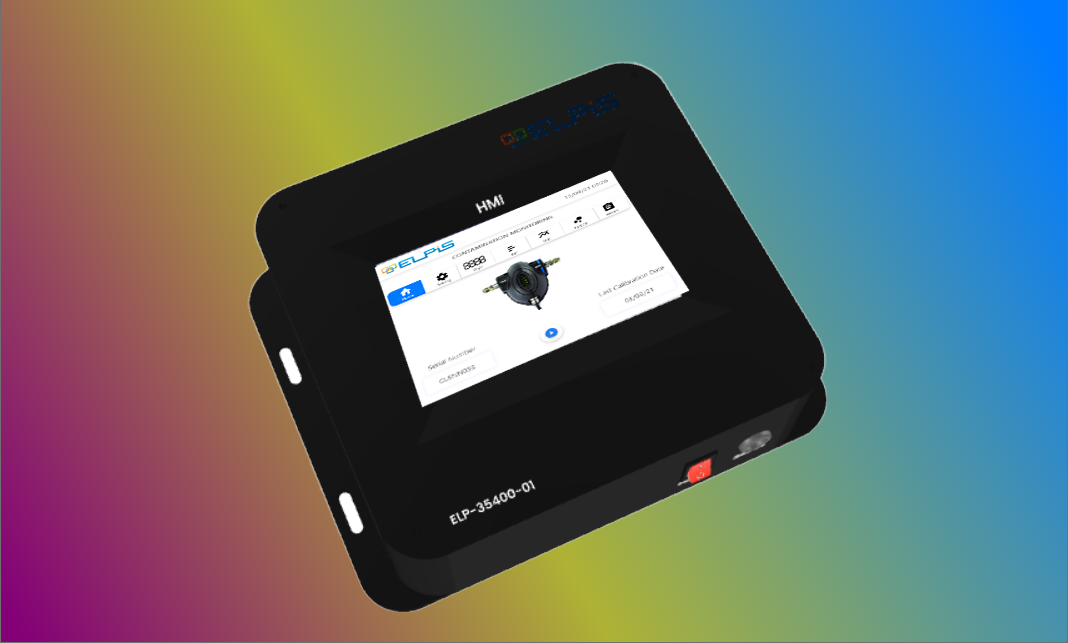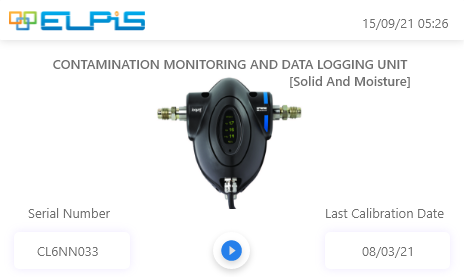
IoT Device for Oil Sensing Sensing
Communication monitoring and data locking unit
adobe xd
analytics, prototype , Branding
IoT Device for Oil Sensing Sensing (IDOS) is a device that acquires data such as solid particle, water saturation, oil flow in hydraulic and lubrication systems both in on-line and off-line states. It is widely
used in the industry for performing real-time analysis of the oil contamination and water saturation. The data curated from these analysis helps in running predictive maintenance. IoT Device for Oil Sensing is an enhanced
version of IDOS that gives information on cleanliness of oil/fluid in ISO/NAS Standards and it recommends the level of filtration needed. The following are the overall benefits of IoT Device for Oil Sensing :
- Saving Service Costs
- Improves Oil Change Intervals
- Preventing Sudden Failures
- Improves the life of machinery
- In turn improves the production
The objective of this case study is to analyse the design process of the IOT DEVICE FOR OIL device, the challenges it faced, and the strategies it adopted to overcome them. The case study will also provide some recommendations for the future improvement and enhancement of the IoT Device for Oil Sensing device.
Background
IoT Device for Oil Sensing device is the main interface between the users and the IOT DEVICE FOR OIL system, and hence, it plays a crucial role in providing a smooth and satisfying user experience. However, the IoT Device for Oil Sensing device has faced some common problems, such as:
Complexity The IoT Device for Oil Sensing device has too many features and functions that often overwhelm and confuse the users. The device also has inconsistent and complex user flows that make
accessing and interpreting the data harder and slower.
Lack of customization The IoT Device for Oil Sensing device has a fixed and rigid layout and design that does not allow the users to customize and personalize the device according to their needs
and preferences. The device also does not provide the users with the option to create and save their own settings and profiles.
Lack of interactivity The IoT Device for Oil Sensing device has a static and passive presentation of the data that does not engage and motivate the users. The device also does not provide the
users with the option to explore and manipulate the data, such as zooming, panning, filtering, sorting, and exporting.
Analysis
IoT Device for Oil Sensing device has undergone a major redesign in 2020, with the aim of simplifying and improving the user experience. The redesign process involved the following steps:
User research The IoT Device for Oil Sensing device team conducted user research to understand the pain points, needs, and expectations of the users. The team used various methods, such as interviews, surveys, observations, and analytics, to gather user feedback and insights. The team also conducted a competitive analysis to benchmark the IoT Device for Oil Sensing device against its rivals and identify the best practices and gaps in the market.
Ideationstrong> The IoT Device for Oil Sensing device team generated and evaluated various ideas and concepts for the redesign of the device. The team used various techniques, such as brainstorming, sketching, wireframing, and prototyping, to visualize and test the ideas and concepts. The team also involved the users and the stakeholders in the ideation process to get their inputs and suggestions.
Implementation The IoT Device for Oil Sensing device team implemented the redesign of the device by developing and deploying the new features and functionalities. The team used agile and iterative methods to ensure the quality and efficiency of the development and deployment process. The team also conducted usability testing and user acceptance testing to ensure the usability and satisfaction of the users and the stakeholders.
Evaluation The IoT Device for Oil Sensing device team evaluated the impact and outcome of the redesign of the device by measuring and monitoring the key performance indicators, such as user retention, user engagement, user satisfaction, data accuracy, and data visualization. The team also collected and analysed user feedback and reviews to identify the strengths and weaknesses of the redesign and the areas for improvement.
The redesign of the IoT Device for Oil Sensing device resulted in the following changes and improvements
Simplified user flow The IoT Device for Oil Sensing device simplified the user flow for accessing and interpreting the data by reducing the number of steps and options. The device also improved the consistency and clarity of the user flow by using intuitive and familiar icons, labels, and gestures. The device also added a top navigation bar and a bottom tab bar to provide easy and quick access to the different sections and features of the device.
Customized layout and design The IoT Device for Oil Sensing device customized the layout and design of the device by allowing the users to adjust and rearrange the size and position of the data displays according to their needs and preferences. The device also provided the users with the option to create and save their own settings and profiles, as well as to filter and sort the data by device, channel, time, or value.
Interactive data presentation The IoT Device for Oil Sensing device interactive the data presentation of the device by adding animations and transitions to the data displays to make them more engaging and appealing. The device also provided the users with the option to explore and manipulate the data, such as zooming, panning, filtering, sorting, and exporting, as well as to drill down and see the details of the data, such as the oil contamination, water saturation, and filtration recommendations.




